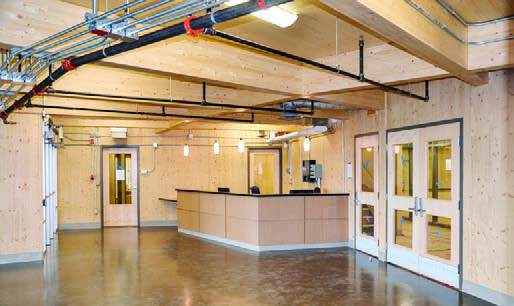Unemployment, lack of education opportunities and poor living conditions are contributing to a state of emergency in remote Canadian communities, particularly for First Nations, Métis and Inuit peoples. Recent waves of suicide, like the crisis in Attawapiskat, northern Ontario, have increased awareness throughout Canada that health workers in these communities are overworked and lack the resources to cope with complicated grief.
Exploration and mining companies often work near these communities in the search for mineral resources. A 2011 study published in the international journal Resources Policy found that community well-being is as adversely affected by mining cycle changes (i.e., boom and bust) as the health of employees, with increased anxiety, stress, depression, and alcoholism in downturns. Companies are more aware of the impacts their activities have on the mental health of their own workers and staff, and on the residents in communities where they operate.
Practical solutions
To lessen any negative economic and social impacts their activities have on the people in the impacted communities, many of these companies are extending mental health initiatives to mine workers and their families, as well as to neighbouring communities. Also, the Canadian government and industry bodies such as the International Council on Mining and Metals and the International Finance Corporation are investing in rural communities reliant on resources; they are also highlighting the importance of companies supporting the mental health and general well-being of communities in their voluntary best practice principles.
Although the underlying cause of mental health issues for isolated, resource dependent communities in Canada may predate the modern mineral exploration and mining industry, it is an issue companies can’t ignore if they wish to gain a social licence to operate today. Two recent initiatives – developed by First Pac West, a Vancouverbased property developer, and Livecare, a medical services company from Surrey – are helping resource companies achieve this aim.
A second life for exploration camps

First Pac West designs and builds unique longhouse-style accommodation for remote worksites that can be repurposed by communities as a public space at the end of the project. The patented Solace System Longhouse is designed with First Nation traditions in mind. It includes a large treated, tensioned, fabric membrane that is supported by an aluminum substructure that is independent of the timber interior, with customizable internal timber partitions and furniture for creating living, working or recreational spaces.
“The design allows for an open feeling of space, with 40- to 50-foot ceilings for ambient natural light, and the proven health benefits of wood create a warm, welcoming environment,” says Dan Caldwell, manager of business development for First Pac West.
Several First Nations and municipalities, including Martensville in Saskatchewan and Fox Creek in Alberta, have partnered with First Pac West to construct recreation facilities for their villages. The spaces can be customized, reconfigured and even relocated to serve as interconnecting sites for schools, clinics, administration buildings or recreation centres.
Repurposing these longhouses for the community at the end of a project provides benefits to both the community and the company, and “creates a legacy in the community,” says Caldwell. The community acquires a valuable, permanent asset, enabling it to become more self-sufficient at minimal capital expense. For the company, the gift can form a core part of a Community Impact Agreement, often required by many municipalities before construction on a work camp can begin. Also, the longhouses have a 40 per cent smaller footprint than portable offices and trailers, and are 50 per cent more energy efficient. Companies can also reuse or repurpose the Solace System Longhouse, may be eligible for carbon credits, and will save demobilized facilities from landfill.
Telemedicine for care on demand

Access to medical care is a challenge for people living in rural and remote communities, and for remote or fly-in fly-out exploration and mine workers. Medical services company Livecare hosts a video- conferencing system that assists in solving the shortage of physician based medical care in rural communities. Telehealth services like Livecare connect patients in remote and rural communities to care through technology. Patients can access timely medical care closer to wherever they are.
The Livecare app links remote patients to urban medical services through an internet video portal that can be accessed by smartphone, tablet or computer. Bank-style encrypted internet security ensures patient confidentiality, and the app can be supplemented with the use of a specially designed health care cart that reads and transmits a patient’s vital signs.
In terms of mental health, explains Dr. Amit Mathur, chief operating officer of Livecare, the advantages of the system are twofold. Firstly, it provides continuity of care, where medical records can be uploaded into a central cloud-based repository. Secondly, it offers confidentiality, as consultations with mental health care physicians or workers can be done in private with a handheld device.
“Telemedicine removes the stigma of asking for or needing ongoing assistance with psychological issues, and is accessible when you need it rather than when an appointment can be scheduled,” says Mathur. Livecare has service provider relationships with the Lax Kw’alaams and Nisga’a nations, and with Enbridge Inc. and the Iron Ore Company of Canada.
Ensuring that communities are supported in terms of wellness and mental health is a complex undertaking, but, as these two firms show, there are realistic and cost-effective steps an exploration or mining company can take toward this goal.
